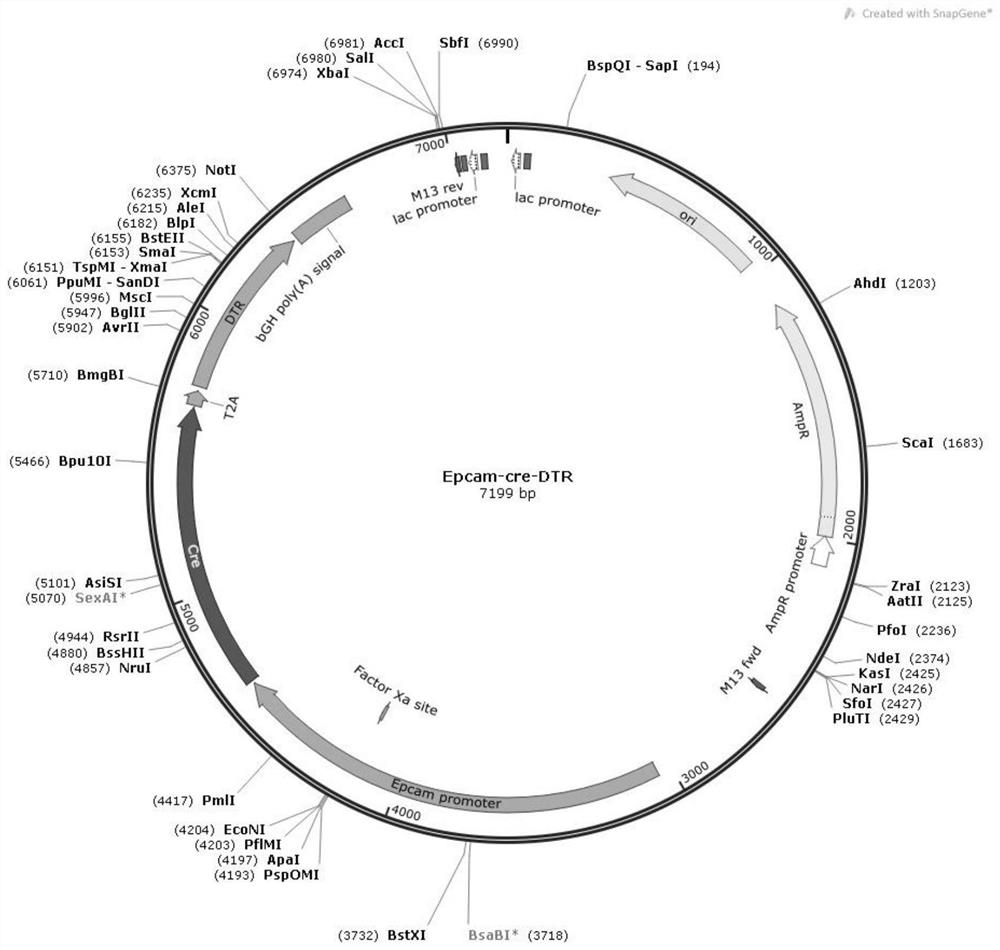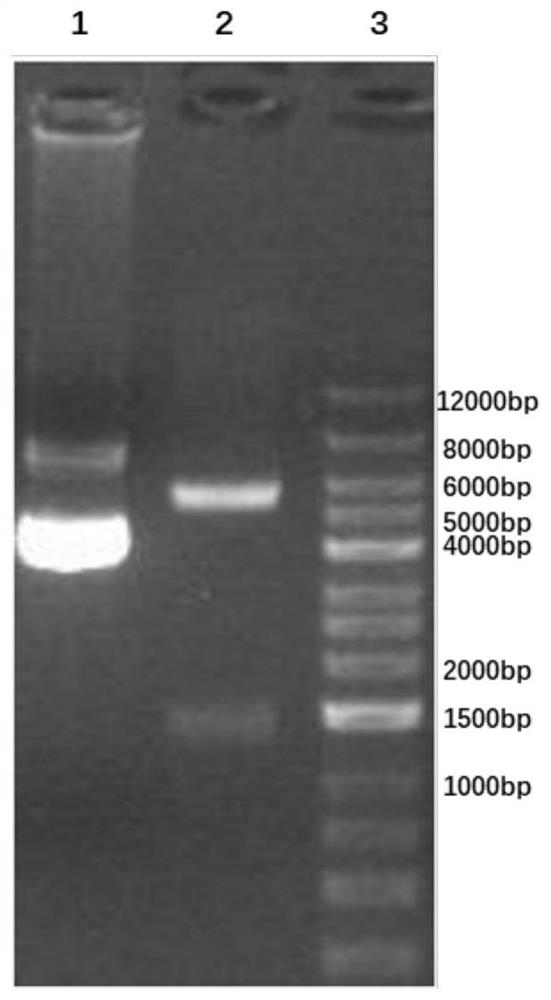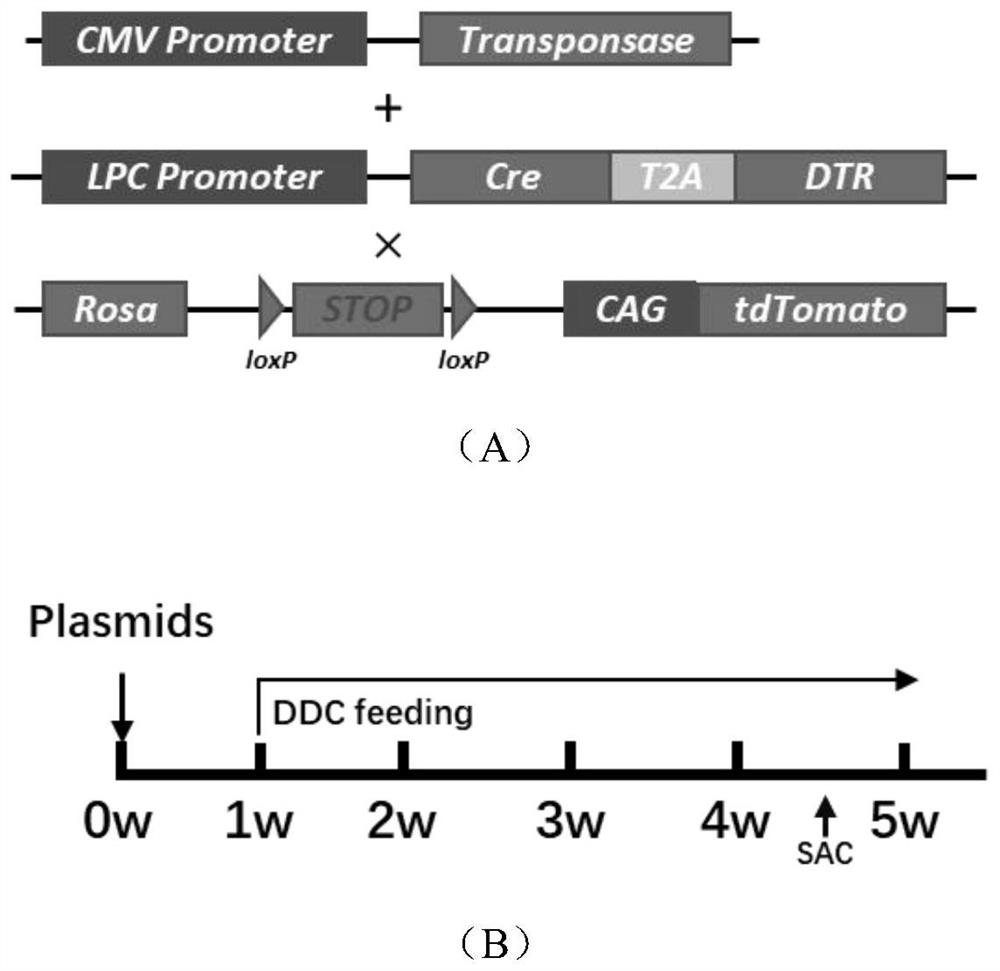Plasmid system for tracing liver precursor cells and application
A technology of liver precursor cells and plasmids, which is applied in the field of medicine and biology, can solve the problems of Epcam+ liver precursor cell research, and achieve the effect of reducing costs
- Summary
- Abstract
- Description
- Claims
- Application Information
AI Technical Summary
Problems solved by technology
Method used
Image
Examples
Embodiment 1
[0035] Embodiment 1 plasmid Epcam-cre-DTR construction and purification
[0036] 1. Construction of expression plasmid pT-Epcam-cre-DTR
[0037] The seamless cloning method is used for construction, and the specific construction steps are as follows:
[0038] After the sequencing is correct, it is digested with Clal and Pmll double enzymes, and connected with the carrier of Clal and Pmll double enzyme digestion. Restriction endonucleases for digestion were purchased from New England Biolabs (NEB), and the reaction was carried out using the system recommended by the enzyme instructions.
[0039] The specific reaction process is as follows: use Clal and Pmll to carry out double enzyme digestion on the above-mentioned PCR product and carrier, and use a high-salt (H) buffer system for the reaction, place it in a 37° C. water bath for 3 hours, and fully digest. After separation by 0.8% agarose electrophoresis, gel recovery was carried out using the gel recovery kit from TIANGEN C...
Embodiment 2
[0056] Example 2 trace verification
[0057] Taking 3,5-diethoxycarbonyl-1,4-dihydrocollidine (3,5-diethoxycarbonyl-1,4-dihydrocollidine, DDC) fed mouse model of liver fibrosis as an example, Epcam- The cre-DTR plasmid system was integrated into the host genome to trace the proliferation of Epcam+ hepatic progenitor cells under liver injury.
[0058] 6 weeks old C57BL / 6J-Rosa26 loxP-stop-loxP–tdTomato Mice were injected with Epcam-cre-DTR targeting plasmid and Sleeping Beauty transposon system ( image 3 A). From week 2 onwards follow the image 3 Feeding DDC in the way shown in B results in bile duct reaction and liver fibrosis in mice and liver damage in mice.
PUM
 Login to View More
Login to View More Abstract
Description
Claims
Application Information
 Login to View More
Login to View More - R&D
- Intellectual Property
- Life Sciences
- Materials
- Tech Scout
- Unparalleled Data Quality
- Higher Quality Content
- 60% Fewer Hallucinations
Browse by: Latest US Patents, China's latest patents, Technical Efficacy Thesaurus, Application Domain, Technology Topic, Popular Technical Reports.
© 2025 PatSnap. All rights reserved.Legal|Privacy policy|Modern Slavery Act Transparency Statement|Sitemap|About US| Contact US: help@patsnap.com



